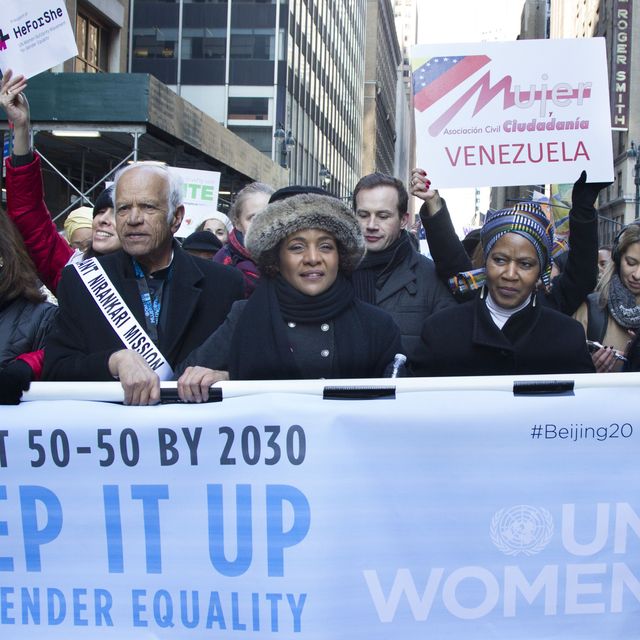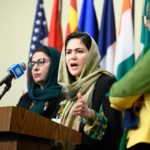Recognising Diversity in Gender

Gender means different things to different people. For many people, it means female or male, woman or man. For some, it’s a “woman’s thing”, something to do with feminism – or it’s related to “political correctness gone mad!”. For others, it signifies a necessary and often exhausting fight for their rights as a human being to be recognised as who they are – to begin a process against discrimination – because in order to fight for your human rights you must first be recognised as human. With the current popularity of right-wing populism across the so-called Western world, the up-hill battle in gender activism seems to get steeper. Nonetheless, non-binary identifying people continue to fight for recognition across the globe.
Germany is not the first country (or state) to rule in favour of a third gender category. In 2007, Nepal’s Supreme Court ruled that third gender people should be acknowledged and have their rights protected by making legal provisions in the New Constitution which guarantee non-discrimination on the grounds of “gender-identity”. By 2015, the first Nepalese citizen travelled abroad using a passport marked O for “other”.
This is, for many, a step in the right direction and a notable moment in the history of gender activism. It does, however, also clearly label those who do not fit into the gender binary as the Other. There is only really a symbolic degree of recognition given through this rule change. It does not necessarily lead to better treatment for those who choose the only option available to them that does not coincide with the binary. Furthermore, mobility justice remains an issue whilst the majority of states across the globe do not recognise a third gender. This brings with it problems related to visa regulations where access to other countries may be denied or non-binary identifying people may be subjected to humiliating processes in order to gain access.
The Medicalisation of Gender
In 2011, Australia implemented new passport rules. These rules include eliminating the requirement for sex reassignment surgery to be undertaken before a person’s gender can be changed on their passports. The new rule allows citizens the option of female (F), male (M), or Intersex/Indeterminate/Unspecified (X) on their passports. However, it is still necessary to attain a doctor’s letter before any changes to a person’s passport can be made. Therefore, Australia’s approach remains medicalised with a doctor’s opinion deemed necessary in aiding a person’s identification of their own gender. This medicalisation continues a possible process of humiliation for many people. Legislators in Ireland have tackled this problem through the Gender Recognition Act 2015. This Act allows any individual over the age of 18 to self-declare their gender identity in documentation, including their birth certificate and passport, without the consent of a medical professional. The person applying for a change in gender is able to choose from either Mr., Mrs., Ms., X, or to specify their preferred terminology. In the State of California, a bill was passed allowing the Gender Recognition Act 2017 to come into effect in 2019 which also bypasses medical intervention in the designation of gender on an individual’s state-issued identification, such as their birth certificate, driver’s license and identity cards.
Statistics: Normalising Diversity
In New Zealand (NZ), Statistics NZ incorporated the category of “gender diverse” into its data collecting practices. This has been celebrated as paving the way for the NZ government to understand the diversity of people’s needs through data collection. Although this does lead to recognition and inclusion of trans people in New Zealand statistics, this all-encompassing category of “gender diverse” is problematic. The suggestion here is that the addition of this category allows for social systems to become better oriented towards a variety of people’s needs. However, the very language used to make this argument contradicts the argument itself. In fact, it brings to light an important point. The act of categorisation, particularly of categorising people into so few boxes with such strict boundaries, cannot possibly understand the diversity of people’s needs. Instead, it attempts to “normalise” and simplify people in order to make the task of bureaucratisation “easier” and less expensive. The recognition that we do not all fit neatly into the binary of female/male is certainly worth celebrating, particularly when this recognition begins to find its way into legislation. However, we must continue to fight for recognition beyond the still medicalised, add-on statistics of the Other or the unspecified.
The German case is itself about the very point of recognition. Germany had already introduced a law in 2013 allowing parents of intersex babies to choose a third “blank” option when registering their child’s birth if they did not perceive their child as either “male” or “female”. But those who do not identify as male or female do not necessarily want a choice between genderless, female, or male. It is the ability to self-identify which is important here, not only to self-identify in private and amongst friends and family but to self-identify legally and publicly, as a person with the same human rights others are granted. The addition of a third gender category which is all-encompassing of anyone who does not identify with the binary in many ways actually reinforces the binary. If there is an important lesson for German legislators to learn here, it is that three genders are not sufficient – human beings are far more complex than that and these complexities need to be tended to more sufficiently in categorisations and statistics.
Teri Shardlow




